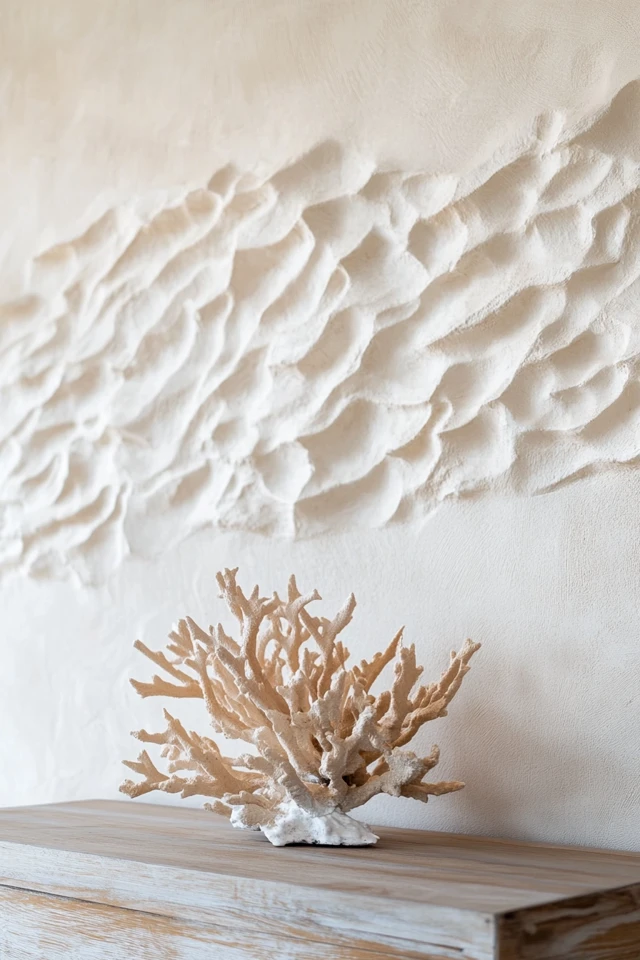Coastal home decor is more than just a design style; it’s a lifestyle that embraces tranquility, natural beauty, and the calming essence of the sea. Whether you live steps from the beach or in a city apartment, the coastal look allows you to bring the serenity of the shoreline into your home. The best part? You don’t have to be an interior design expert to get started.
When I first dabbled in coastal decor, I thought it would mean filling my space with seashells and nautical symbols. But as I learned more, I realized the real magic of coastal design lies in its simplicity—soft colors, natural textures, and a breezy, uncluttered feel. After a few strategic changes, my space felt lighter, brighter, and like a year-round seaside retreat.
If you’re new to coastal decor, this beginner-friendly guide will walk you through everything you need to know to create your own coastal haven.
1. Start with a Neutral Color Palette
Why It Works
Neutral tones mimic the natural colors of the coast, from sandy beaches to cloudy skies.
How to Do It
- Use whites, creams, and light grays as your base colors for walls and larger furniture.
- Add soft blues, greens, and beiges as accent colors.
- Keep the palette cohesive to maintain the serene, coastal feel.
Example:
Paint your walls in an off-white or light gray, then add a soft blue rug or throw blanket to introduce subtle color.
2. Incorporate Natural Materials
Why It Works
Natural textures like rattan, jute, and wood add an organic, beachy touch to your decor.
How to Do It
- Use a jute rug in your living room or entryway.
- Add woven baskets for storage or as decorative accents.
- Choose furniture with natural wood finishes, such as light oak or whitewashed pieces.
Styling Tip:
A light wood coffee table paired with a woven basket for magazines instantly adds coastal charm.
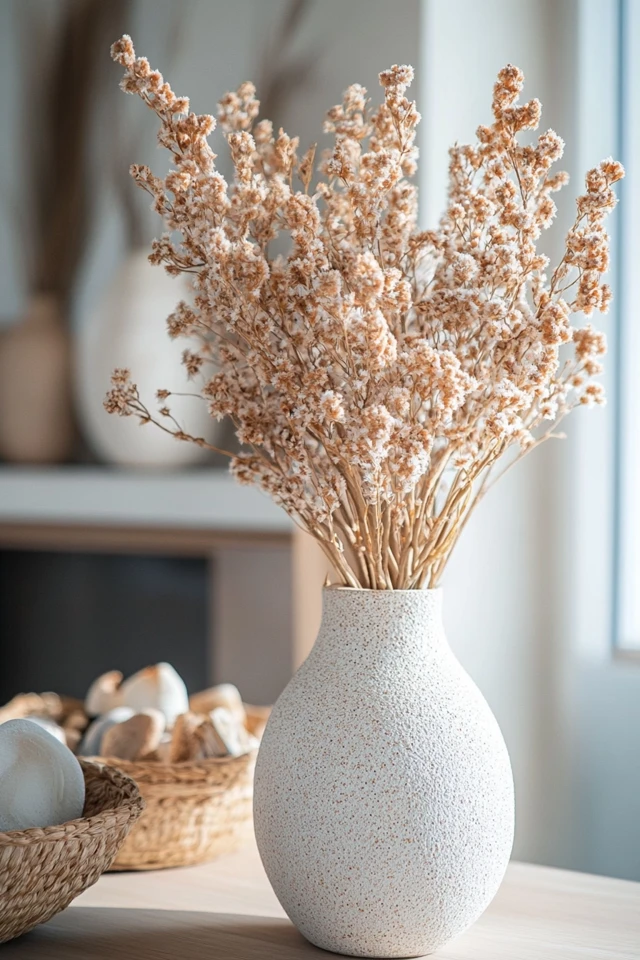
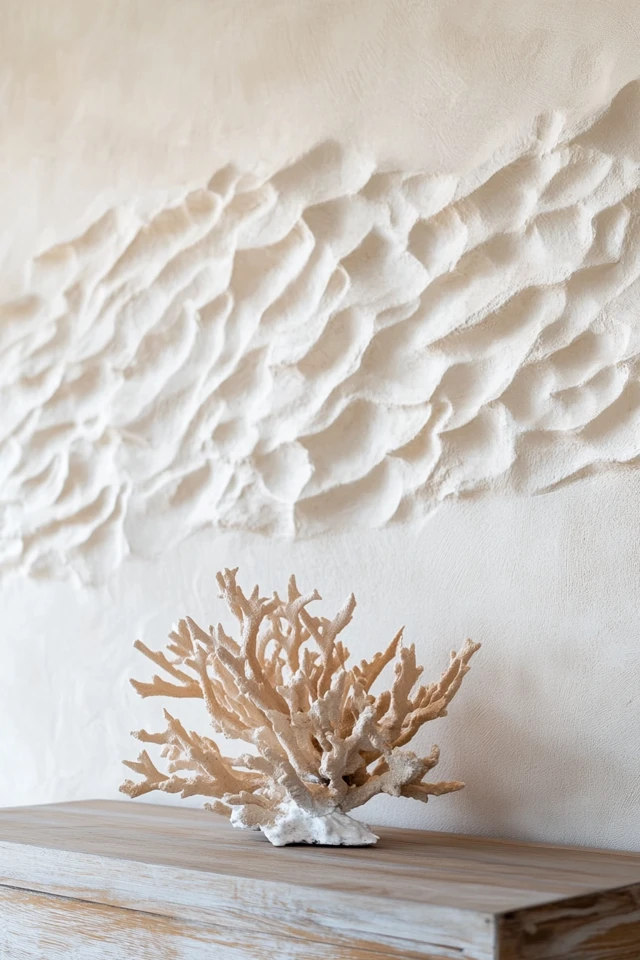
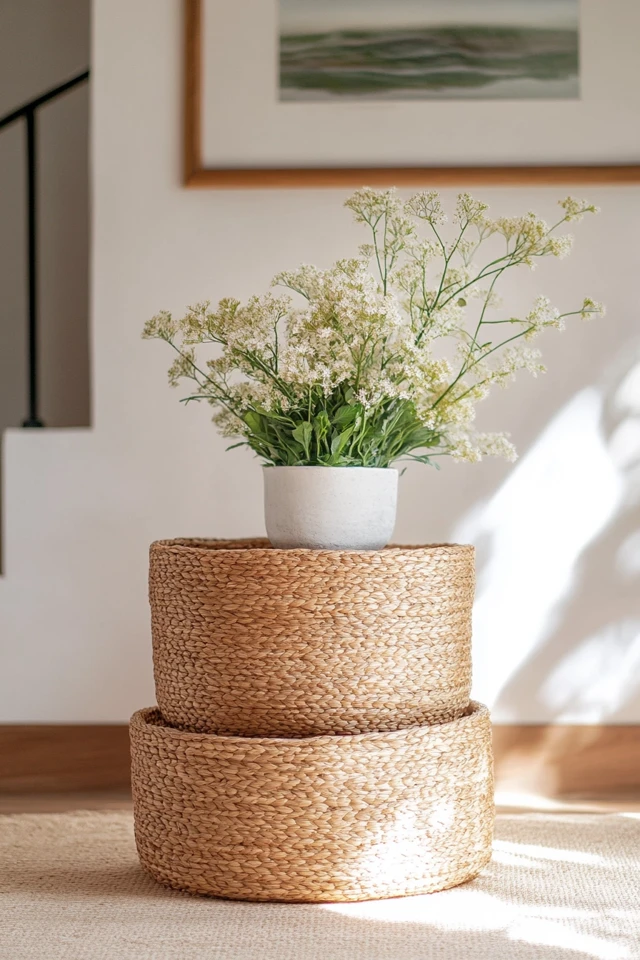
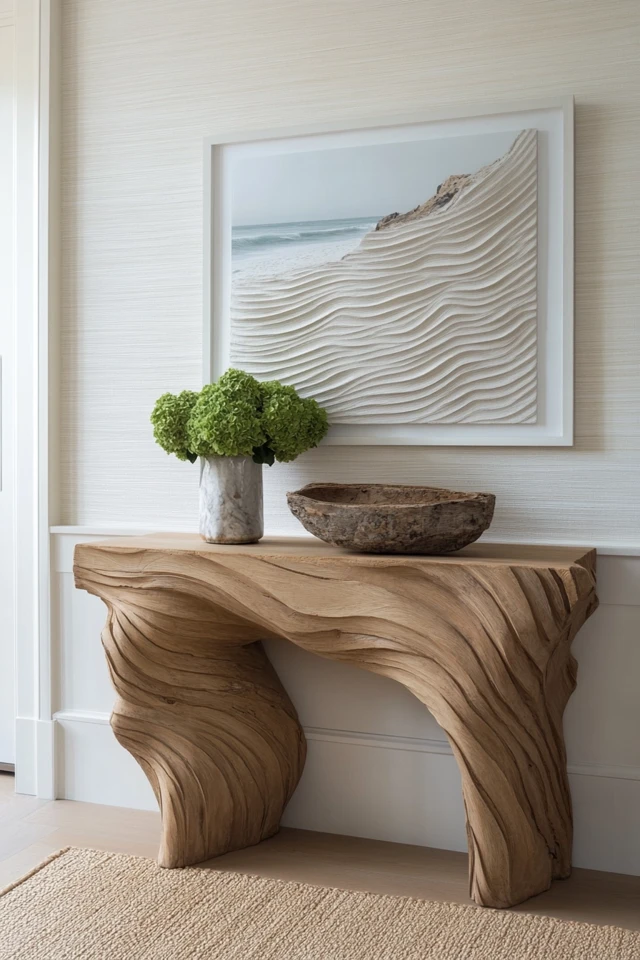
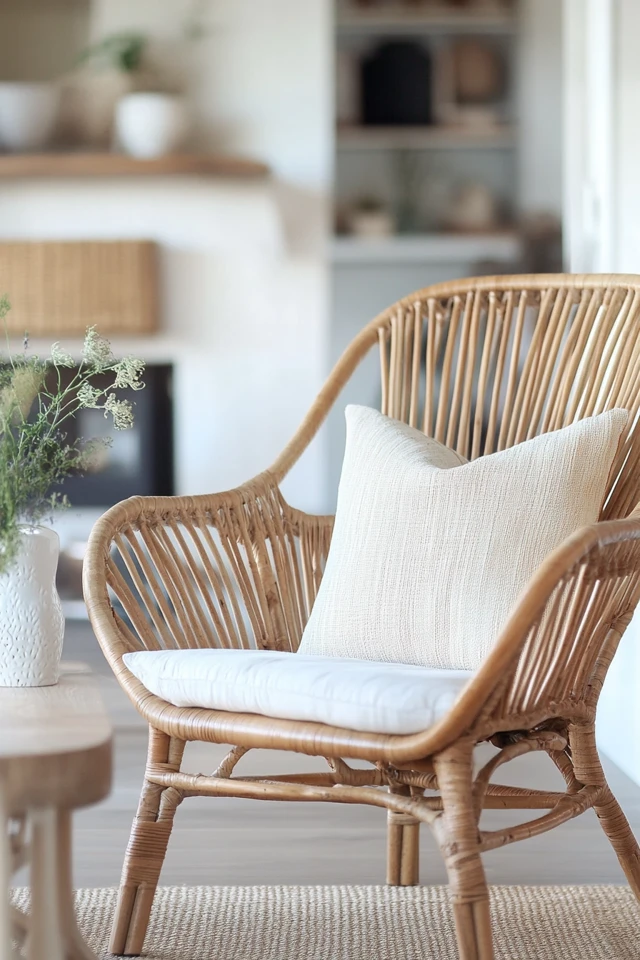
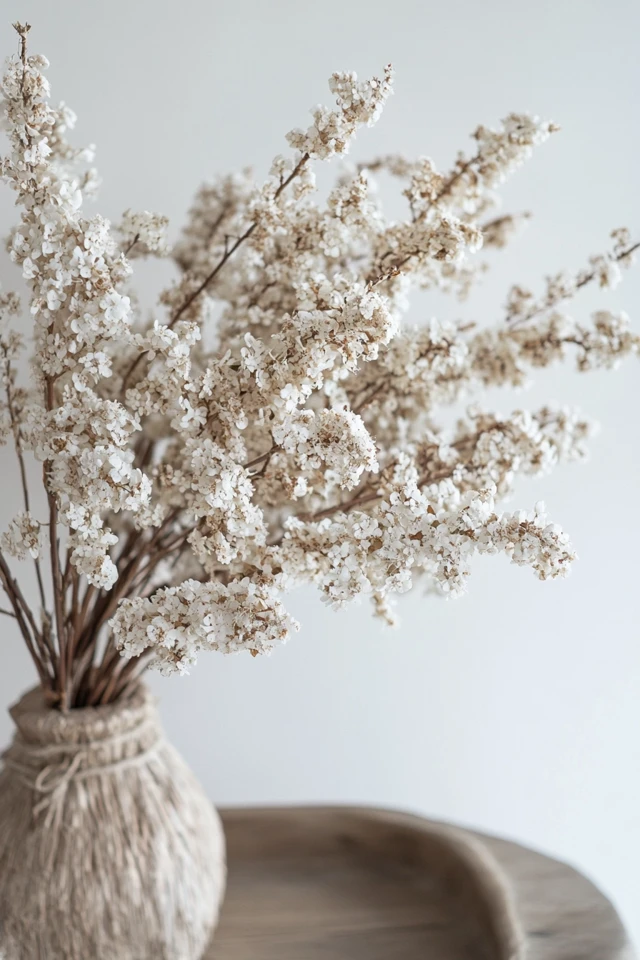

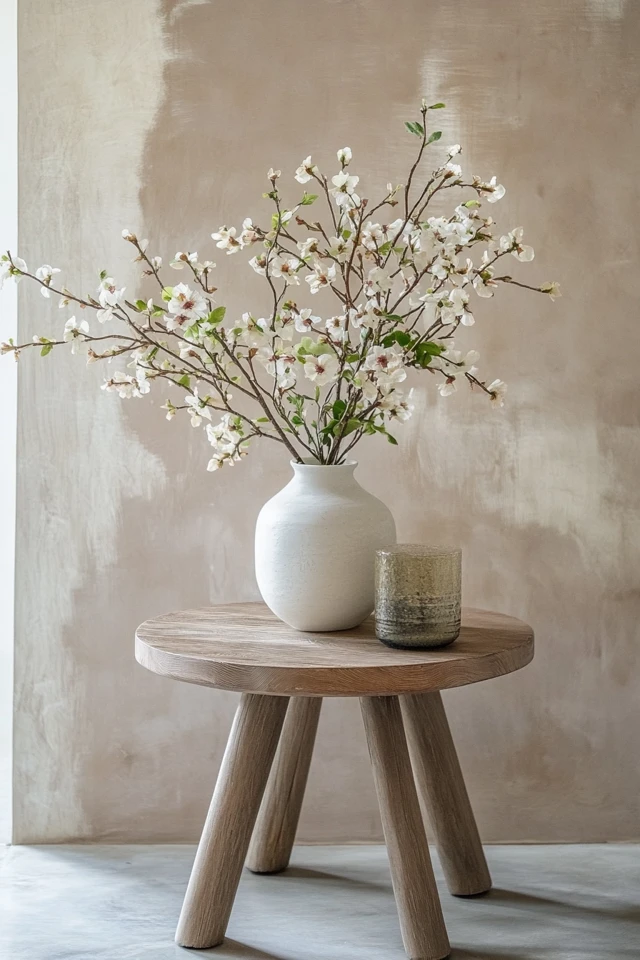
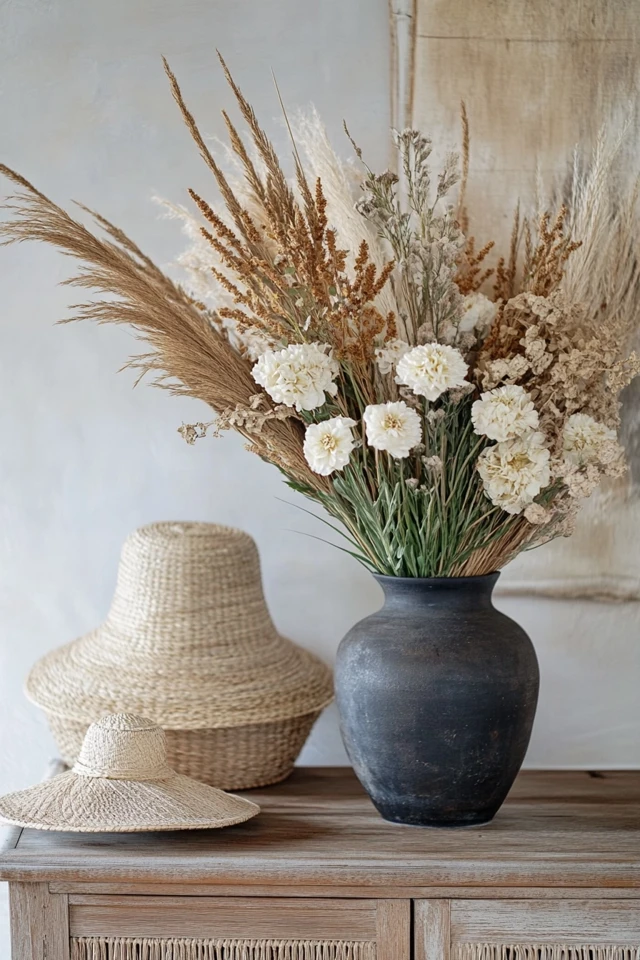

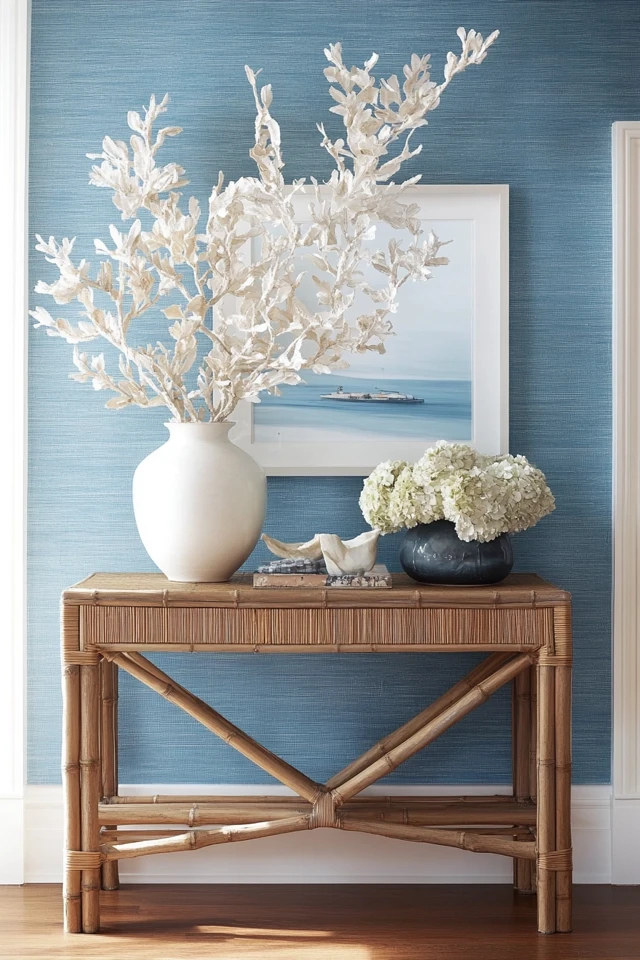
Picture Gallery
3. Embrace Airy, Open Spaces
Why It Works
Coastal design thrives on open, uncluttered spaces that feel fresh and inviting.
How to Do It
- Declutter your space, focusing on minimalist decor and furniture.
- Use light, sheer curtains to let in natural light.
- Rearrange furniture to create a more open, breathable layout.
Styling Tip:
Place a large mirror opposite a window to amplify natural light and make the room feel larger.
4. Add Subtle Nautical Accents
Why It Works
Nautical touches nod to the ocean without feeling overly themed.
How to Do It
- Incorporate striped throw pillows or rugs in navy and white.
- Display a few small coastal decor pieces, like a rope-framed mirror or a driftwood sculpture.
- Hang art that features abstract watercolors or ocean scenes.
Example:
A rope-framed mirror above a console table or a vintage map of the coastline adds subtle nautical charm.
5. Focus on Comfortable, Casual Furniture
Why It Works
Coastal homes are designed for relaxation, so the furniture should feel cozy and approachable.
How to Do It
- Choose slipcovered sofas and chairs in white or neutral tones.
- Opt for oversized armchairs with plush cushions.
- Use furniture with simple, clean lines to keep the look uncluttered.
Styling Tip:
A slipcovered sofa paired with a linen throw and woven ottoman creates the perfect coastal seating area.
6. Use Coastal-Inspired Lighting
Why It Works
Lighting sets the mood for a space, and coastal design thrives on light, natural fixtures.
How to Do It
- Hang pendant lights made from rattan, wicker, or glass.
- Add table lamps with clear glass bases or ceramic finishes in soft blue or white.
- Use sconces with brushed nickel or brass finishes for a subtle nautical vibe.
Example:
A rattan pendant light over the dining table adds texture and elegance to a coastal-inspired room.
7. Bring in Greenery
Why It Works
Plants add life and vibrancy, enhancing the natural, organic feel of coastal spaces.
How to Do It
- Use potted plants like ferns, palms, or fiddle-leaf figs to add greenery.
- Display succulents or air plants in small ceramic or glass containers.
- Incorporate fresh flowers in simple vases for a pop of color.
Styling Tip:
A tall palm in the corner of your living room or a small succulent on the coffee table adds a refreshing coastal touch.
8. Layer Textiles
Why It Works
Textiles add softness and warmth, balancing the light and airy feel of coastal design.
How to Do It
- Layer lightweight throws in cotton or linen on sofas and beds.
- Add textured pillows with subtle patterns like stripes or abstract waves.
- Use lightweight rugs in natural materials, like jute or sisal, to anchor the room.
Example:
A bed dressed with white linen sheets, a soft blue throw, and striped pillows creates a relaxed coastal vibe.
9. Include Coastal Art and Decor
Why It Works
Artwork and decor inspired by the sea tie the theme together without overwhelming the space.
How to Do It
- Hang prints or paintings of seascapes, sailboats, or abstract ocean art.
- Display vases or jars filled with sand, shells, or driftwood.
- Use subtle decor pieces like glass buoys or ceramic fish for an understated coastal look.
Styling Tip:
A framed watercolor painting of the ocean above the sofa creates a soothing focal point.
10. Keep It Simple
Why It Works
The essence of coastal design lies in its simplicity—less is more when it comes to decor.
How to Do It
- Choose a few statement pieces rather than cluttering the space with too many accessories.
- Stick to a cohesive color palette and avoid adding too many contrasting patterns or styles.
- Focus on quality over quantity to create a refined, serene atmosphere.
Styling Tip:
A single driftwood sculpture on a shelf or a cluster of blue glass vases makes a stronger impact than overloading the space with decor.
How to Maintain Your Coastal Home Decor
- Declutter Regularly: Keep spaces clean and uncluttered to maintain the light, airy feel.
- Refresh Textiles: Rotate throws, pillows, and slipcovers seasonally to keep them looking crisp.
- Maximize Natural Light: Clean windows and use sheer curtains to let sunlight flow in.
- Incorporate Seasonal Decor: Update decor with small changes, like fresh flowers in spring or driftwood accents in summer.
- Clean Natural Materials: Dust wicker, rattan, and wood furniture regularly to keep them looking fresh.
Conclusion
Coastal home decor is all about creating a serene, welcoming space that feels like a year-round beach retreat. By focusing on soft colors, natural textures, and subtle nautical touches, you can transform any home into a coastal haven, no matter where you live.
When I incorporated these tips into my own home, it felt like I’d brought a slice of the beach inside. The airy, light-filled rooms and relaxed atmosphere instantly made my space feel more peaceful and inviting.
Now it’s your turn! Use this ultimate guide to embrace coastal decor and create a space that radiates calm, charm, and effortless style.
FAQ
What’s the difference between coastal and nautical design?
Coastal design focuses on soft, natural elements like light colors, organic textures, and an overall breezy feel. Nautical design, on the other hand, emphasizes bold navy and white stripes, anchor motifs, and maritime themes.
Can coastal decor work in small spaces?
Yes! Stick to a light color palette, use mirrors to reflect light, and keep the decor minimal to make small spaces feel open and airy.
How can I avoid a coastal home looking too themed?
Focus on subtle nods to the beach, like natural materials and ocean-inspired colors, rather than overtly nautical items like anchors and ship wheels.
What are the best plants for a coastal home?
Palms, ferns, fiddle-leaf figs, and succulents all work beautifully in a coastal-inspired space.
Do I need to live near the beach to have coastal decor?
Not at all! Coastal design is about capturing the feeling of the beach, so you can bring it into your home no matter where you live.

